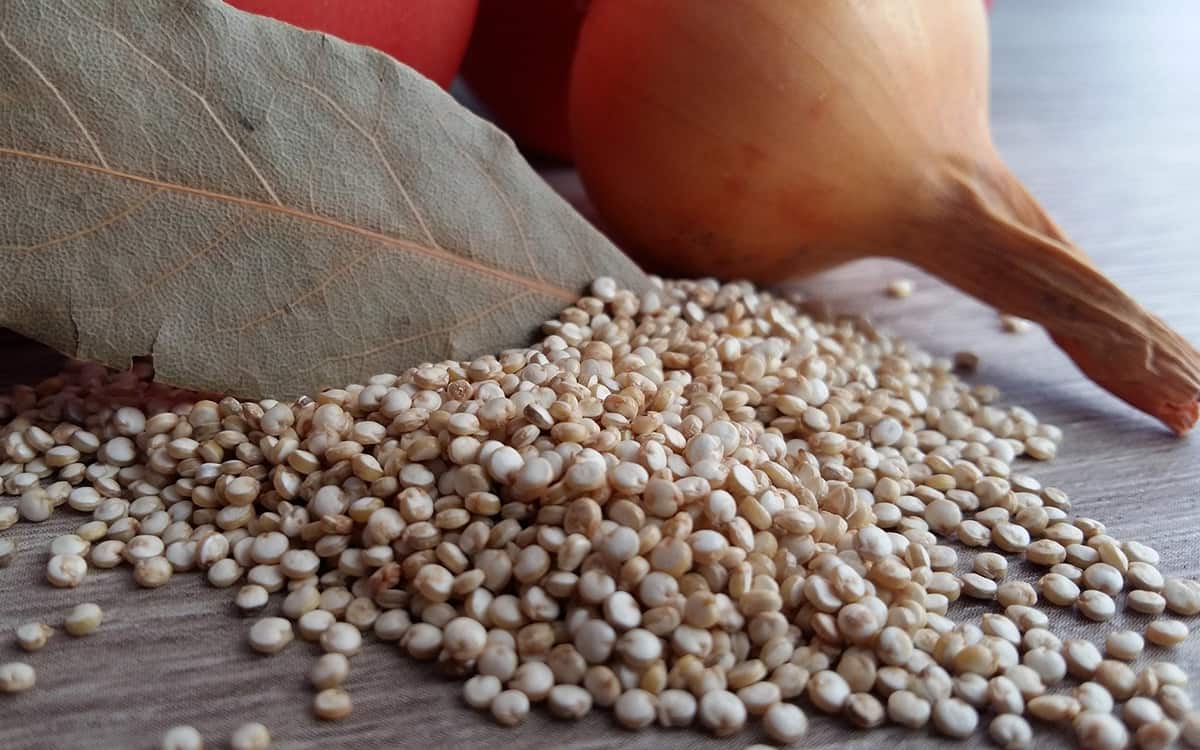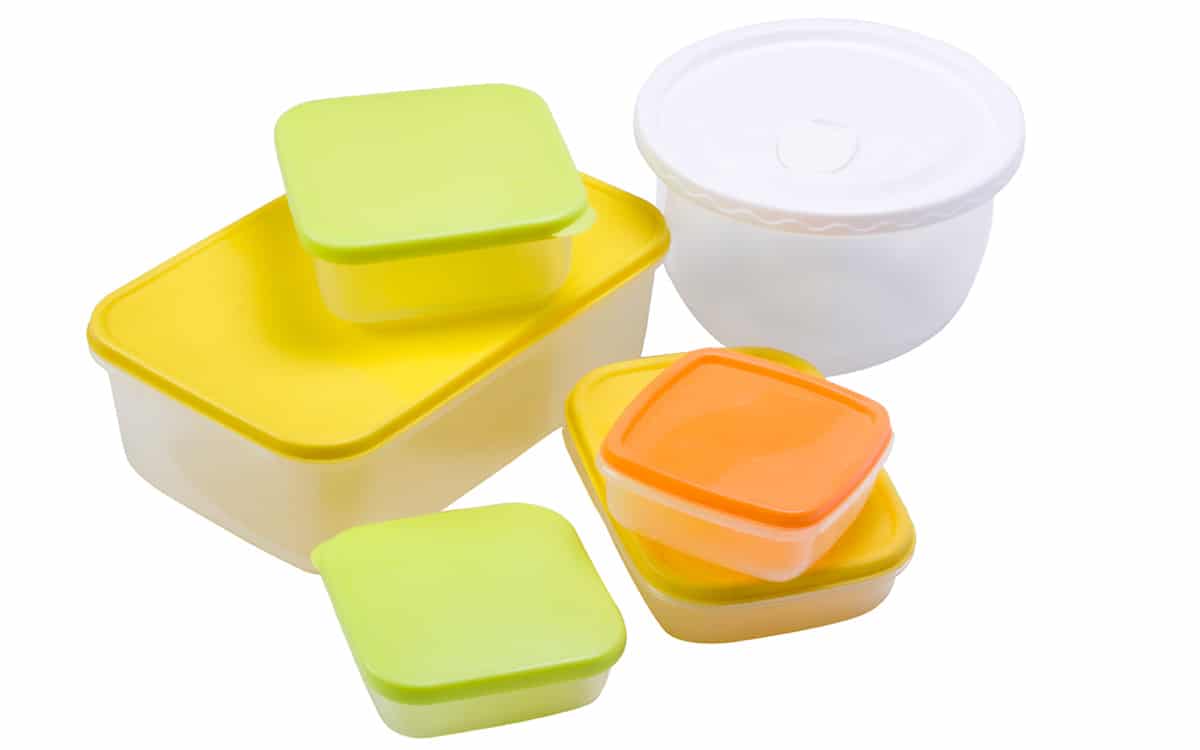Raw grains can last for years if properly stored in an airtight container, and kept away at a cool, dry, and dark place. Quinoa is the edible seed from the flowering plant in the amaranth family.
How long does uncooked quinoa last? As dried uncooked grains, they can last up to 2 to 3 years from the date it was produced, and longer if stored in the refrigerator or freezer. Storing them in the following containers with an oxygen absorber will guarantee their freshness longer:
- Glass mason jar
- Airtight plastic container
- Vacuum pack
Why Store Quinoa?

Quinoa is considered a superfood due to it having a higher nutritional content than most grains. Cooked, it is made up of 21% carbohydrates which is comparable to barley and rice. It is also the only carbohydrate source that contains 9 essential amino acids. Plus, it has iron, phosphorus, manganese, and copper.
This grain is also high in fiber, protein, and is gluten-free. Due to its high fiber content, it can also sustain satiety, which is the feeling of fullness, for longer periods. This is useful when SHTF as it can lead to the conservation of the food supply. Preppers and survivalists should consider adding this superfood to their emergency stockpile.
On top of all of this, the grain can be sprouted and planted. Quinoa is relatively easy to grow and harvest. It is a very hardy plant that can grow in a wide range of climatic conditions. It also produces a quantity of seed per plant, which reduces its required growing space. In an SHTF scenario, having a versatile grain that has a long shelf life, and can be easily planted is going to be an essential part of survival.
Ways to Keep Quinoa Fresh
There are four things to consider when storing quinoa. The pantry, the freezer, the proper containers, and an oxygen free environment. All play a role in keeping quinoa, or almost all food fresh for a longer time.
Pantry
The pantry is a space where ingredients are usually stored. It can be as small as a cabinet, or as large as a small room. The most important things are that it is kept dry, cool, pest free, and sunlight does not enter the space. This is because these things contribute to the faster degradation of food and its packaging.
Quinoa can last up to two to three years past its expiration date in the pantry. This is given that it is stored in an airtight container, and the pantry is in its perfect condition (dry, cool, pest free, and no sunlight is getting in).
Refrigerator and Freezer

The freezer can be a part of a refrigerator, or available as a standalone appliance. The main difference between the two is that a freezer reaches, and maintains temperatures below 0 oC (32 oF), while a refrigerator can only reach as low as 1oC (33.8 oF), where food does not freeze.
If refrigerated, quinoa can last for more than 3 years past its expiration date as long as it is properly stored in an airtight container, and the temperature is maintained for at least below 5 oC (41 oF). In the freezer, it can potentially last longer. However, freezing can result in faster degradation if the grains are not properly packed.
Oxygen, at temperatures below freezing, contributes to the loss of moisture of all poorly packed frozen food, resulting in changes in texture, and taste. This effect is what we call freezer burn. As such, when prepping quinoa for freezing, the best way to store it is in a vacuum pack because it removes almost all the air in the packaging, and prevents air from getting in.
The Proper Containers
Prolonging the shelf-life of quinoa in the pantry, the refrigerator, or the freezer will not be possible without the proper storage containers. It is important to use the correct type of vessels depending on where you want to store them.
Glass mason jar
A mason jar is any glass jar that has a screw thread on the outer perimeter of its mouth for a screw-on lid. What makes it better for storing quinoa than any other type of jar, is that the mason jar remains airtight even for years as long as it is stored in a dry place.
This container is best used for storing quinoa in the pantry. It can also be used in the refrigerator or the freezer, but the downside is that it can be bulky. Contrary to common beliefs, glass jars can be frozen as long as it is properly done.
Water expands when frozen, and is the major cause of glass breakage in the freezer. If freezing quinoa in a mason jar, make sure to leave a little headroom for the content to expand. Although, this isn’t much of a problem with raw quinoa since it has a very low moisture content.
Plastic Containers

Plastic containers are an alternative to glass jars if the weight of the container is an issue. However, not all plastic containers are created equally. There are only 4 types of plastic that are safe for prolonged storage. These are:
- Plastic #1: PET (Polyethylene Terephthalate)
- Plastic #2: HDPE (High Density Polyethylene)
- Plastic #4: LDPE (Low Density Polyethylene)
- Plastic #5: PP (Polypropylene)
To determine which type of plastic a container is made from, look for the triangle symbol with a number inside it. This is often found at the bottom of any plastic container. This is not a recycle sign, nor does it tell you how many times the plastic can be recycled. It is the resin identification number that identifies the type of plastic the object is made of.
A downside in using plastic containers is that most are not rated for freezing. This means that the container will warp, break, or degrade over time when stored for extended periods in the freezer.
Vacuum Pack
This is perhaps the best container for storing quinoa for when SHTF. Most vacuum packs are made from polyethylene (plastic #1) which makes them safe for food storage. Vacuum packing removes air and oxygen, which is perfect for freezing. It can also be used for prolonged storage in the pantry, or the refrigerator.
The only downside is that the packaging is not re-sealable. An opened packet should be transferred to a different airtight container. In the context of prepping, it stands above all other containers in terms of keeping quinoa, or other food fresh for a longer time.
Oxygen Absorber
Oxygen absorbers are small, breathable pouches filled with iron powder. The iron oxidizes by reacting with the oxygen and moisture present in the air, forming rust. This item, together with vacuum packing offers the best combination for keeping quinoa fresh the longest.
Why Do These Methods Work?

The main reasons why these methods work is because of the low temperature, low oxygen exposure, low moisture, and no sunlight exposure.
The low temperatures of a pantry, a refrigerator, and a freezer slow down the metabolic processes that naturally degrades food. At extremely low temperatures, microorganisms that cause spoilage also get deactivated or killed.
Storing quinoa in an airtight container prevents pests that want to eat it, and can bring microorganisms from getting in contact with the grains. On top of this, it is also protected from the effects of oxygen. Oxygen causes a chemical reaction that makes the food rancid, changing its texture, smell, and taste.
Moisture is another factor that can cause degradation. This is because it can break down the packaging and introduce bacteria and oxygen to the contents. It also promotes bacterial and fungal growth. With the addition of an oxygen absorber, the effect of moisture and oxygen is eliminated.
In addition to these, keeping the quinoa away from direct sunlight prevents photodegradation. Some nutrients are photosensitive. Exposure to sunlight can destroy the nutrient content of the food.
In summary, the best way to keep quinoa fresh is to vacuum seal it together with an oxygen absorber, and store it in the refrigerator or the freezer. Preppers must have a dedicated pantry, that is cool, dry, and dark where food stock is stored. Refrigeration and freezing of food are the best way to store them, but when SHTF, the lack of electricity from the grid can be problematic.
